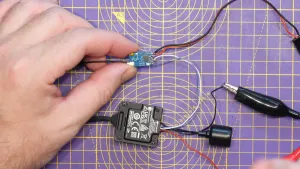
In a short, practical clip, Painless360 demonstrates a neat feature of the new TBS all‑in‑one flight controllers: the ability to switch VTX power from your radio. The trick is simple, useful and a little blunt — the AIO currently supplies raw battery voltage to the video transmitter (VTX) when a user mode is activated in iNav. That works fine for many systems, but it also raises questions about safety and heat when you start talking higher cell counts or devices that expect regulated BEC outputs.
What Painless360 shows
Painless360 plugs a voltmeter onto the AIO FC’s two VTX power wires, toggles a switch on his ExpressLRS radio and watches the voltage come alive. The VTX power line idles at roughly 0.187 V with the mode off, then jumps to about 15.42 V when the mode is turned on from the radio.
When the mode is switched off, the voltage falls back to ~0.2 V — Painless360 notes the slow drop is likely a capacitor discharging on the board.
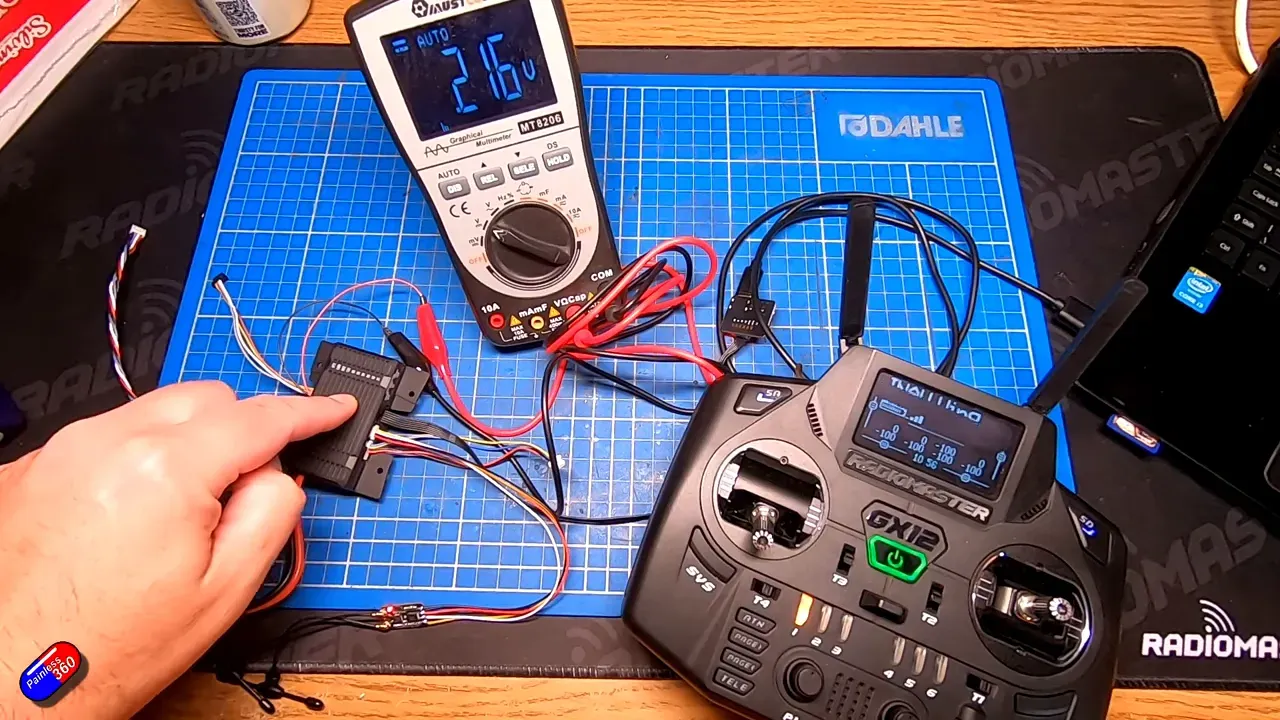
How the VTX switching works (the tech bit)
Key points from the demonstration:
- The AIO FC routes battery voltage straight out to the VTX port when the configured user mode is active. There is no internal regulated BEC option in the shipping hardware to convert that to 9 V or a lower regulated rail.
- Painless360 measured ~15.42 V on his setup — that’s essentially the battery rail (so it will vary with battery state and cell count).
- When the mode is deactivated the voltage falls nearly to zero, with a small residual due to onboard capacitance.
- The wires that feed the HD systems (DJI, Walksnail, Ruby, etc.) are the same wires used in the AIO FC’s VTX port; Painless360 simply connected those to a voltmeter to demonstrate the behaviour.
Configuring this in iNav — step by step
Painless360 walks through the iNav side of the setup. It’s straightforward:
- Open the iNav configurator and go to the Modes tab.
- Add a User mode (User 1) and assign it to a switch on your radio.
- Set the switch range so that when you flick the radio switch the User 1 mode becomes active.
- When User 1 is active the AIO FC supplies battery voltage to the VTX port; when it’s inactive the power is removed.
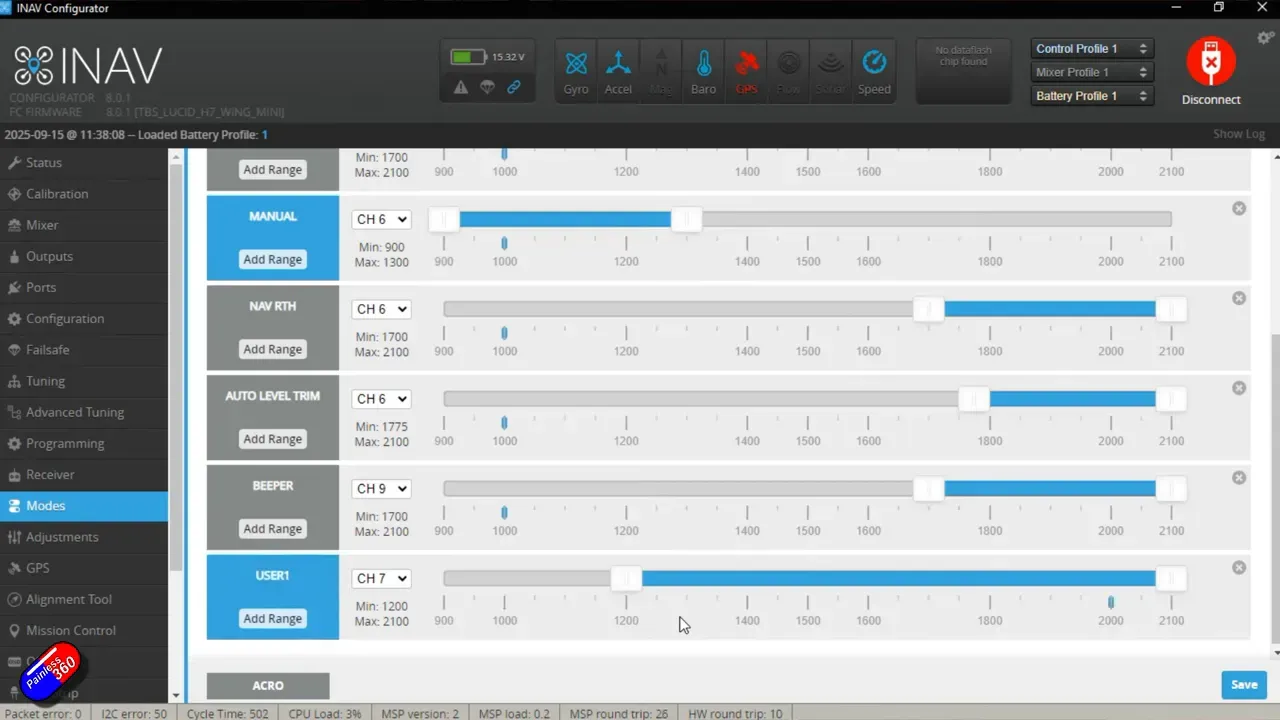
Painless360 also suggests wiring User 1 to fit your preferred workflow: use a dedicated switch for VTX power, or combine it with your arm switch (channel 5 on many receivers) so the VTX powers in a middle position and the top position arms the craft — handy for three‑position radios. Note: ExpressLRS hardware used in the demo currently supports two‑position switch wiring, so adapt accordingly.
Manual gotcha: you do NOT need to set IO pin
The official manual for this AIO mentions setting a pin IO option to enable VTX switching — but Painless360 confirmed that’s incorrect. You only need to add the User mode in iNav and bind it to a switch. He’s already reported the error to TBS; expect the manual to be updated.
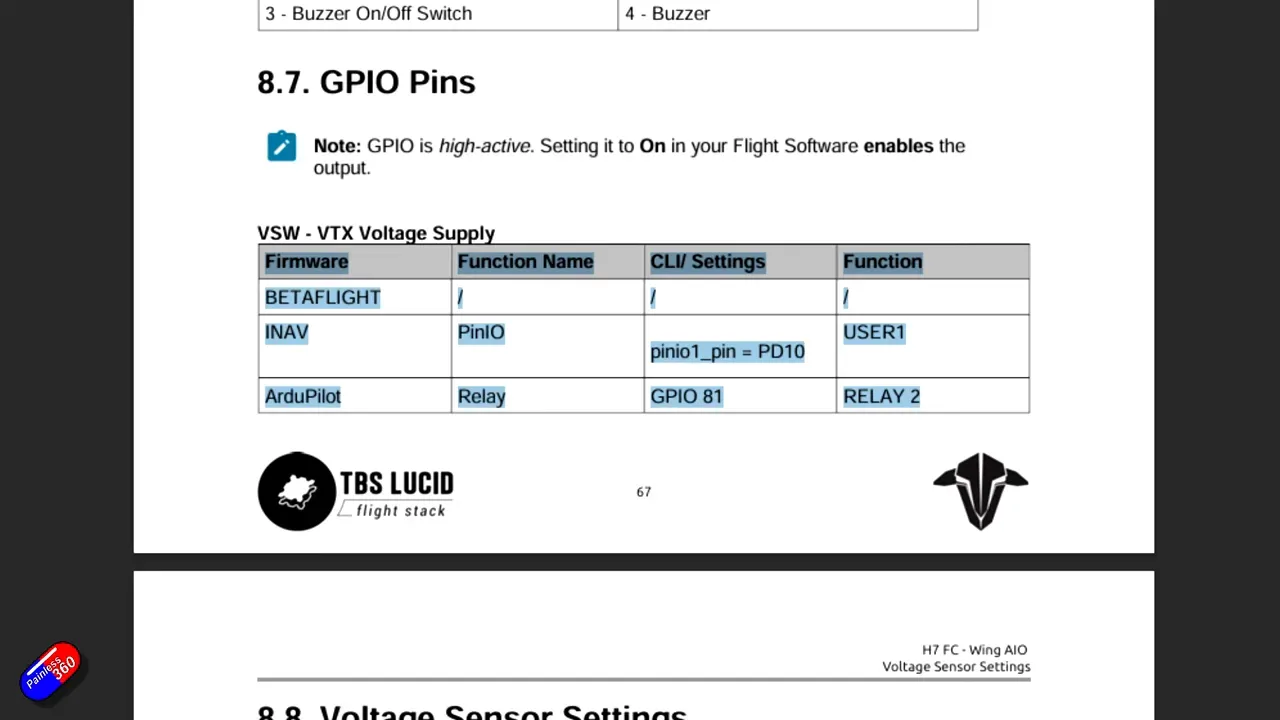
Safety analysis and practical recommendations
This is a useful, simple feature — but it isn’t a silver bullet. A few practical concerns and recommendations:
- Raw battery voltage is raw. Feeding raw battery voltage directly to some HD modules or VTX designs can be dangerous, especially on 6S packs. Some goggles or VTX boards expect a regulated 9 V or 12 V supply; giving them 15–25 V (typical of 4S–6S) can harm the electronics.
- Heat and power dissipation. A VTX designed for a 9 V input may become hot if it has to drop a lot of voltage internally. That’s another reason to prefer a regulated BEC where appropriate.
- Use an external BEC/voltage regulator if needed. If you want to run high‑cell batteries and a VTX/goggles that expect a lower regulated voltage, add a BEC or step‑down regulator between the AIO FC output and the device. Painless360 explicitly says he’d like to see TBS include an internal 9 V 2.5–3 A BEC in a future revision to make this safer and neater.
- Test before you fly. Measure the powered voltage with a meter, and check device input specs before connecting expensive HD modules or goggles.
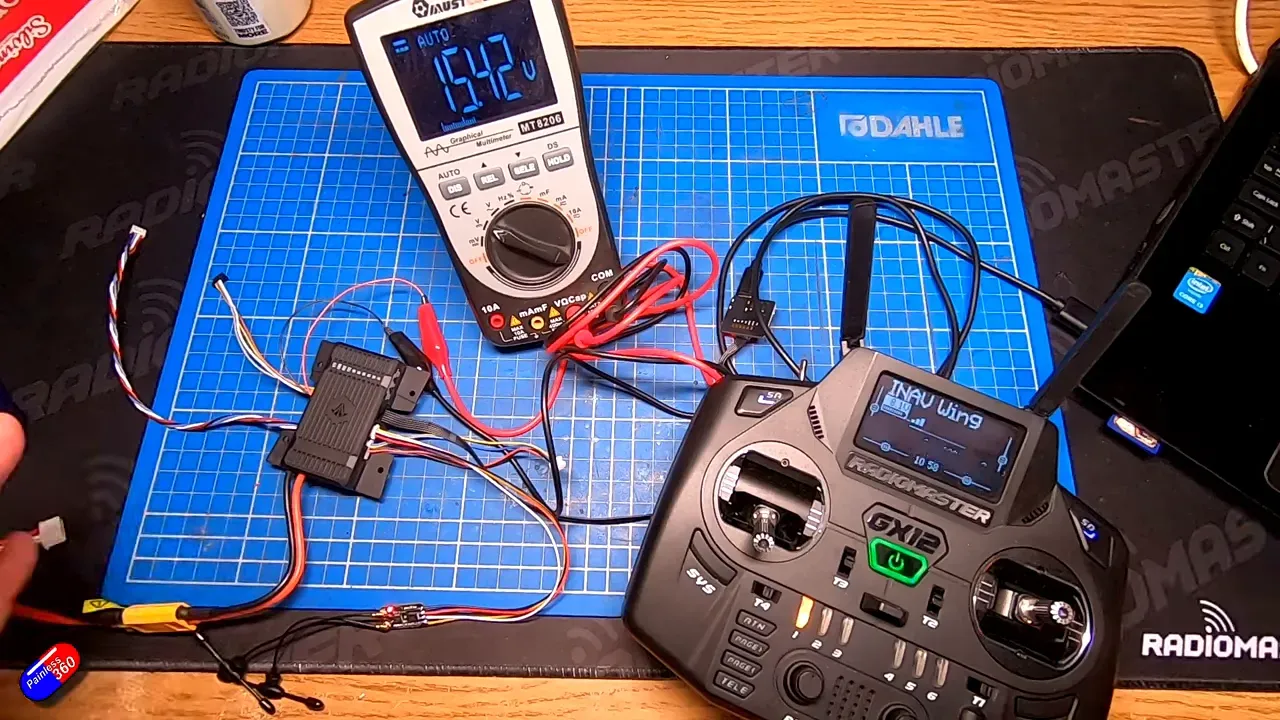
Useful further reading (from UnmannedTechShop)
If you want to dig deeper into related topics — soldering, power issues, and external BECs — these writeups are relevant and recommended by Painless360’s demonstration:
- SpeedyBee BEC adapter (useful when feeding DJI/HD goggles safely): https://www.unmannedtechshop.co.uk/2023/06/28/no-more-battery-blues-meet-the-speedybee-bec-adapter-for-dji-goggles/
- How to solder FPV drones (if you’re wiring in BECs or modifying your harness): https://www.unmannedtechshop.co.uk/2023/09/23/how-to-solder-fpv-drones-a-comprehensive-guide-for-beginners/
- Power supply configuration issue with iFlight Nazgul O3 air units (powering HD systems can be fiddly): https://www.unmannedtechshop.co.uk/2023/07/21/power-supply-configuration-issue-with-iflight-nazgul-o3-air-units/
- More on HD FPV systems and when you might need regulated supplies: https://www.unmannedtechshop.co.uk/2019/09/20/hd-fpv-will-blow-your-mind-%f0%9f%a4%af/
Critical takeaways
Painless360’s demo is a neat proof‑of‑concept: yes, the TBS AIO FC can switch VTX power via iNav user mode, and it does so by connecting battery voltage to the VTX port when that mode is on. It’s convenient and simple, but it’s not the same as having an on‑board regulated BEC. Until TBS ships a version with selectable regulated outputs, plan for external voltage regulation if you run higher cell counts or devices that explicitly demand 9 V or lower.
FAQ
Q: Will this damage my DJI, Walksnail or Ruby HD unit?
A: It might, if your HD device expects a regulated voltage and you feed it raw battery rails from a high‑cell battery. Always check the device input rating. If it expects 9 V and you give it 15 V from a 4S, that could be destructive.
Q: Do I need to change a pin IO setting in the manual?
A: No. Despite what the manual currently says, you only need to add a User mode in iNav and bind it to a switch. Painless360 has reported this manual error to TBS.
Q: Which iNav configuration is needed?
A: In iNav’s Modes tab add User 1 and assign it to a radio switch. When User 1 is active, the AIO will supply battery voltage to the VTX port.
Q: Can I make the VTX power a separate switch from the arm switch?
A: Yes. You can use a dedicated switch for VTX power, or combine it with your arming switch scheme — Painless360 suggests a three‑position arrangement where the middle powers VTX and the top arms the quad (subject to your radio hardware supporting three‑position mappings).
Q: What’s the safe workaround until TBS adds an internal BEC?
A: Use an inline BEC or step‑down regulator between the AIO VTX output and your HD module/goggles. The SpeedyBee BEC adapter (linked above) is one example for DJI goggles; other regulated 9 V/12 V BECs work equally well.
Credits and next steps
This article summarises and analyses a short demonstration by Painless360. If you want to see the hands‑on measurement and switching in real time, check Painless360’s original video for the full walkthrough and context. Painless360 also mentions playlists and other setup videos that further expand on the TBS AIO ecosystem and iNav workflows.
Happy flying — and measure the voltage before you plug anything expensive into your new TBS AIO FC.
This article was created from the video TBS AIO FC Quick Tip: How to setup the VTX switching power in INAV.



